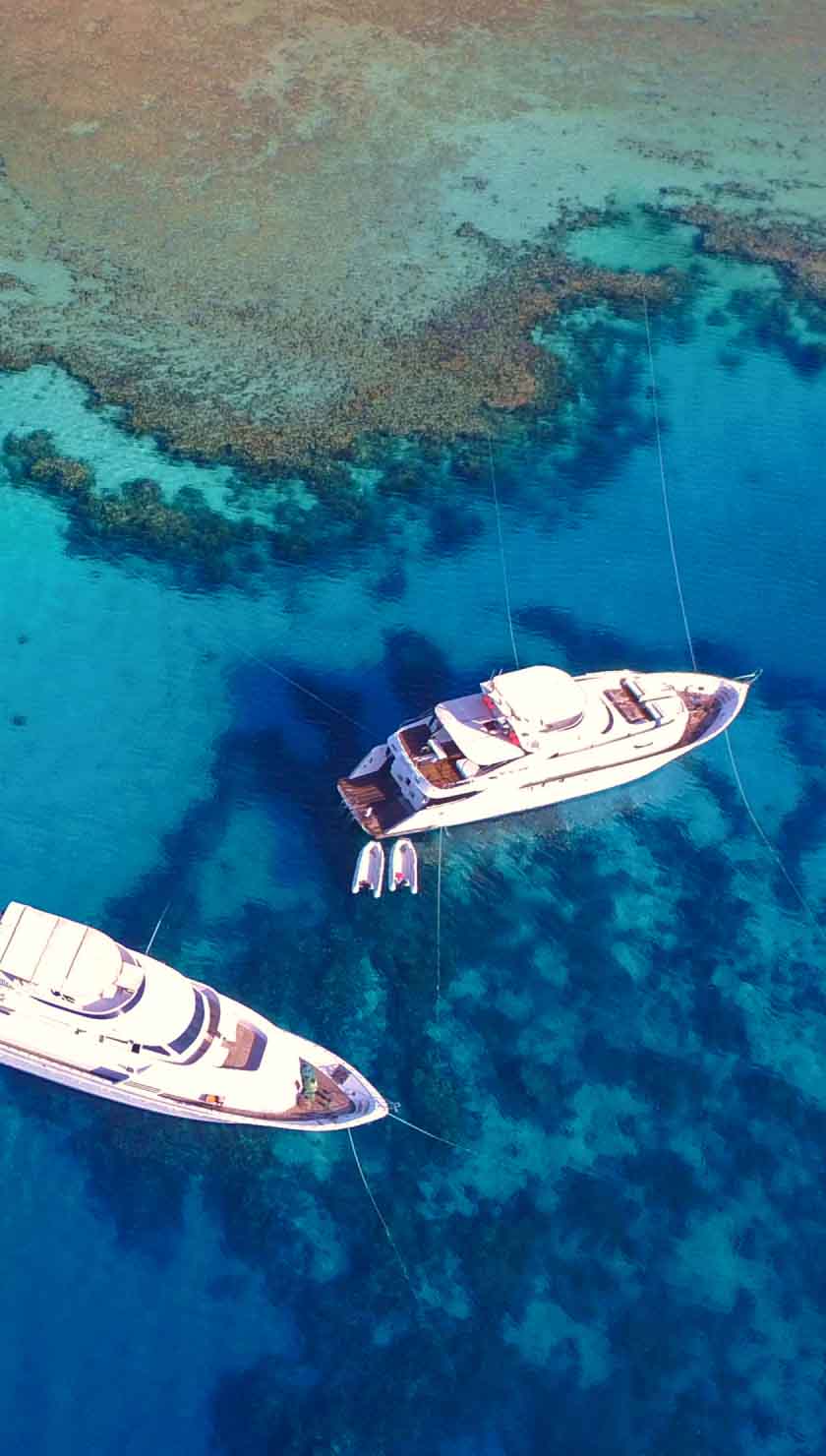Liveaboard Diving in Malpelo Island
What to Expect on a Malpelo Island Liveaboard
Malpelo Island liveaboards will visit this exceptional small island in the eastern Pacific Ocean, about 500 km west of the Colombian mainland. Malpelo Island belongs to Colombia but is accessible by select Panama liveaboards. It is a sinister-looking rock formation that rises from the bottomless depths of the Pacific Ocean. This dive site is the main objective of all our Liveaboard Cruises due to its wild and spectacular marine environment with a reputation for abundant schooling sharks and big marine animals.
Two oceanic currents wash the west coast of both North & South America: the California Current from the North and the Humboldt Current from the South added to many other streams, making the west coast a classic upwelling zone. Sea conditions can make entries and exits from your liveaboard challenging at times. Currents can be strong, making drift diving the best option on some sites. Occasionally the crossings can get a little bumpy; however, diving at Malpelo makes it more than worthwhile.
Visibility ranges between 10 meters and 35 meters. Occasionally, upwellings full of plankton can bring a lot of fish but also reduce visibility. Water temperatures range between 16 and 24ºC on the surface.
In 2006 Malpelo Island was declared by UNESCO as a Natural World Heritage Site. The Malpelo Foundation only allows one liveaboard dive cruise in Malpelo, carrying a maximum of 25 divers, to be present at the island at one time as there are only two main moorings for larger vessels located at the island.
Malpelo Island Underwater
Liveaboard diving on Malpelo Island will allow divers to dive with an exhilarating amount of sharks and big fish. The two highlights of this dive site are the schools of hammerheads (up to 300) that mix with silky sharks, which forms colossal shark schools, and many free-swimming moray eels. Aside from that, you can see a variety of other shark species, like the Galapagos shark, whale shark, and white tip shark, together with vast schools of other big fish species, angelfish, creole fish, jackfish, tuna, sailfish, and even at times whale sharks, humpback whales, and blue whales.
Dive Sites of Malpelo Island
The Cathedral: This pinnacle has a tunnel passing through it from a sandy bottom at 18 meters, almost reaching the surface on the other side. The walls of the tunnel are covered in corals and sponges. The tunnel interior contains many varieties of fish and white tips, eels, grunts, snappers, eagle rays, and tunas.
The Twins: Two towering pinnacles grow almost parallel up to 9 meters from the surface, forming canyons that schools of hammerheads and eagle rays like to swim through. You can see many scorpionfish and eels on the shallower parts of these pinnacles.
The Freezer: Hence the colder waters on this side of Malpelo Island; it's also called The Freezer. Hard corals cover part of this wall, while its volcanic nature is easy to recognize in other places. Vast schools of hammerheads, as well as other pelagic species, are attracted to this site. Here you can see silkies, mantas, eagle rays, whale sharks, tunas, jacks, and eels.
La Gringa: This is the biggest rock on the south side of Malpelo. A cave also passes through part of this pinnacle between 40 and 24 meters. From here, with excellent visibility, it is possible to see three seamounts. A large school of big eye jacks inhabits the exposed side of this rock. Here you can encounter groups of hammerheads; sometimes, Galapagos sharks also visit this area. Furthermore, there are jacks, tunas, eagle rays, and scorpionfish.
Top Tips for Divers
Due to unpredictable weather conditions, diving south of Panama on a liveaboard is a little tricky and can be challenging and, therefore, more suitable for experienced divers. Most Liveaboard Safaris to Malpelo request a divers' experience level of at least Advanced Open Water diver with a minimum required of 30 logged dives.
When diving in the Eastern Pacific, nitrox is a must. The more spectacular the diving, the longer you want to stay underwater. Also, you must remain very conservative in Malpelo because there is no "nearest" decompression chamber.











